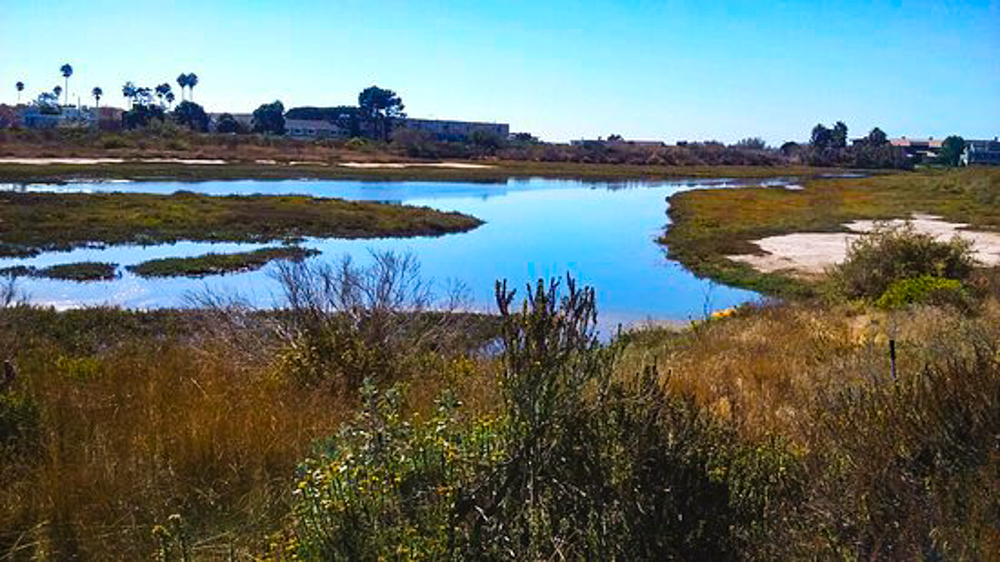Wetlands Store a Lot of Carbon
Wetlands Can Slow Climate Change and Increase Resiliency of Coastal Communities

From the perspective of nature’s services, especially storing carbon, wetlands are the most valuable real estate per acre on the planet. For example, when California wetlands, coastal and inland, are considered together, they support more species of flora and fauna than any other type of habitat in the state. This impressive diversity enables them to transform large amounts of carbon dioxide into plant tissue and, subsequently, into soil humus. Not all wetlands are equally effective at sequestering carbon, but many are the most effective agents of sequestration found anywhere on earth.
Wetlands are neither completely terrestrial nor completely aquatic but are the transitional boundary areas between the two. They undergo wet and dry cycles due to fluctuating water levels. Although some stay wet year-round, other are only seasonally wet.
Throughout most of recorded human history, wetlands have been regarded as wastelands—insect-infested areas to be drained, filled in, and developed. According to Wetlands, by Mitsch and Gosselink, California lost 91 percent of its wetlands by 1990. The loss continues, but at a much-reduced rate. The pattern is similar worldwide, with half the world’s wetlands being lost in the past century, mostly due to agricultural runoff but also from infrastructure development. Coastal wetlands are especially challenged, because a large percentage of people live in coastal zones. Over half the U.S. population lives in coastal counties, intensifying the stress on seashore wetlands.
Today, wetlands constitute only 3 percent of the earth’s surface, yet they store a third of the world’s carbon. Even now, these powerhouses of carbon sequestration are not given appropriate recognition: There is no international climate agreement featuring wetlands as a potent way to slow climate change. The Paris 2015 climate agreement, on the other hand, recognizes forest conservation and creates incentives to protect and expand tropical forests as carbon sinks. Wetlands merit equal attention. Protecting and restoring swamps and wetlands has a much greater value for climate mitigation than any short-term economic gain resulting from their development.
As we are starting to experience the impacts of climate change — bigger and more destructive storms, larger and more frequent wildfires, devastating floods and mudslides, and more severe droughts — coastal wetlands can help mitigate some of these impacts for communities like Santa Barbara. Restoring and expanding these natural buffers is one of the best investments for protection and resiliency.
Two scientists at UC Santa Cruz, using insurance industry storm-surge models, calculated that Atlantic coast wetlands prevented $625 million in direct property damage or more than 3 percent of Hurricane Sandy’s property damage. This benefit occurred despite greatly reduced and compromised wetlands. These researchers are convinced that conserving and rebuilding wetlands is a key strategy for major carbon storage and for the resiliency of coastal communities.



